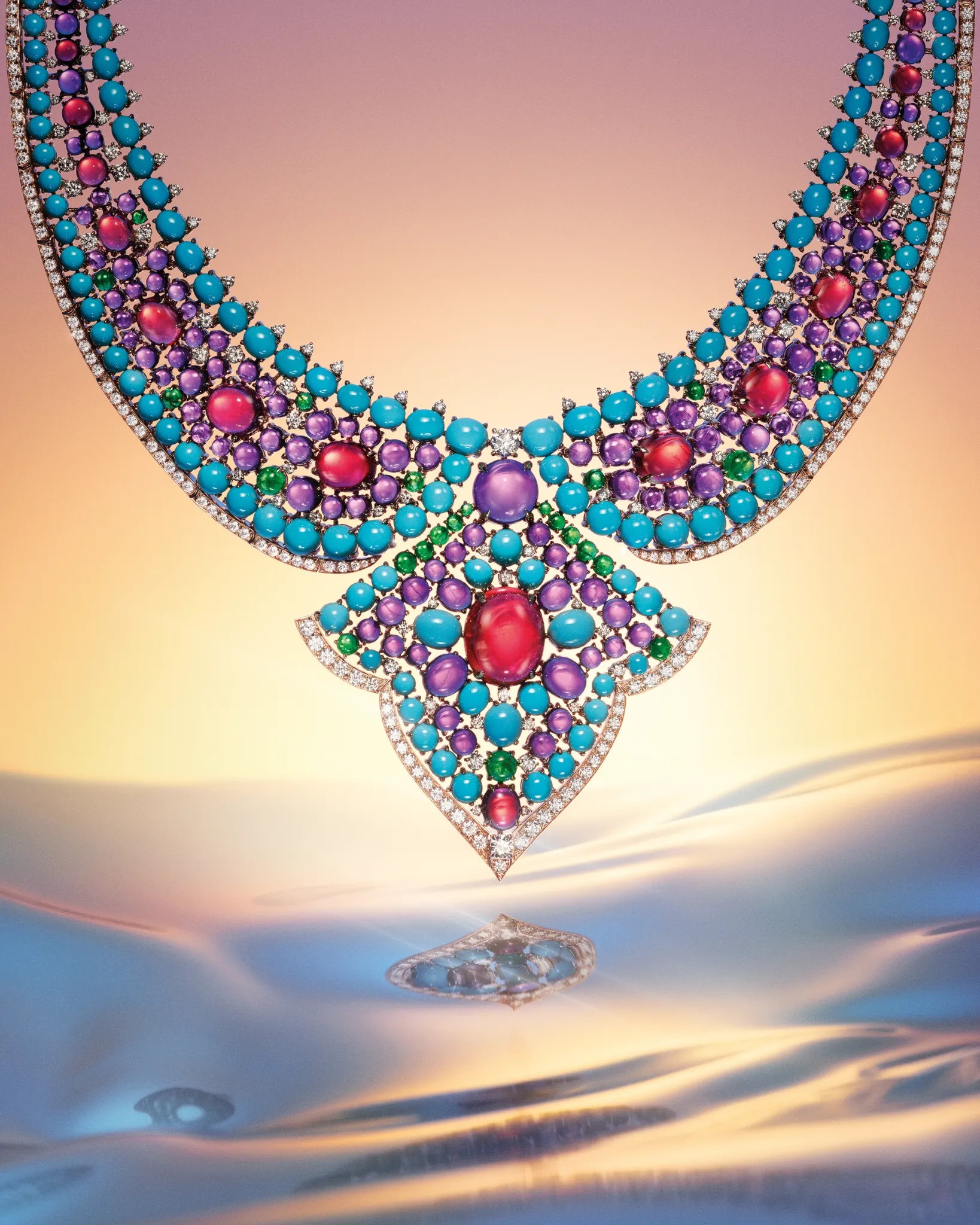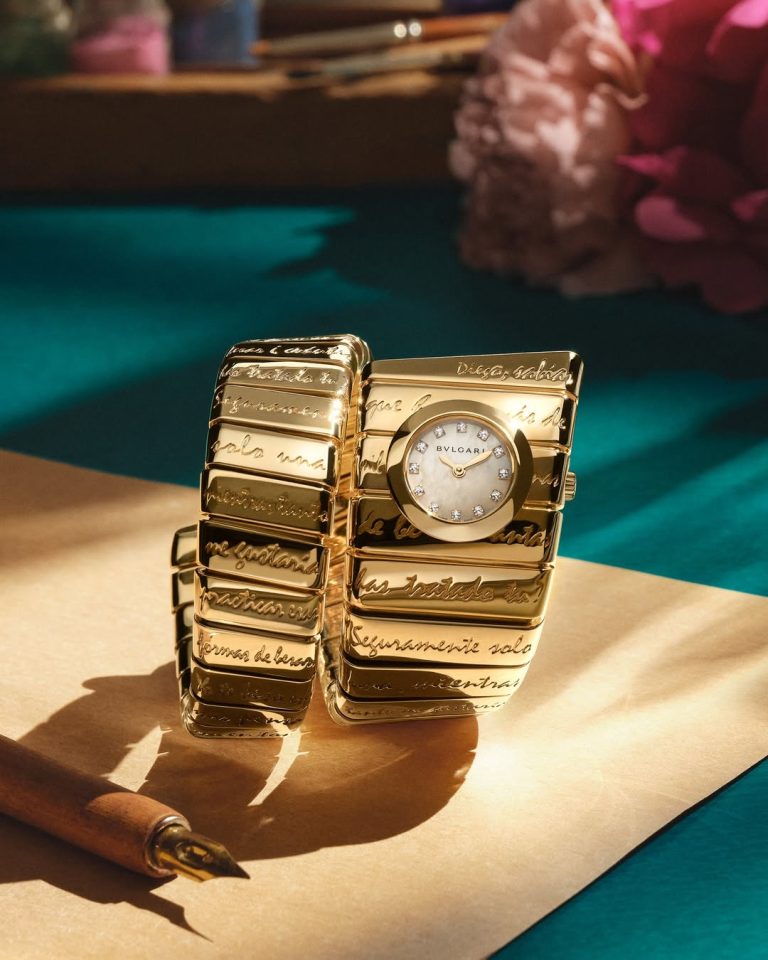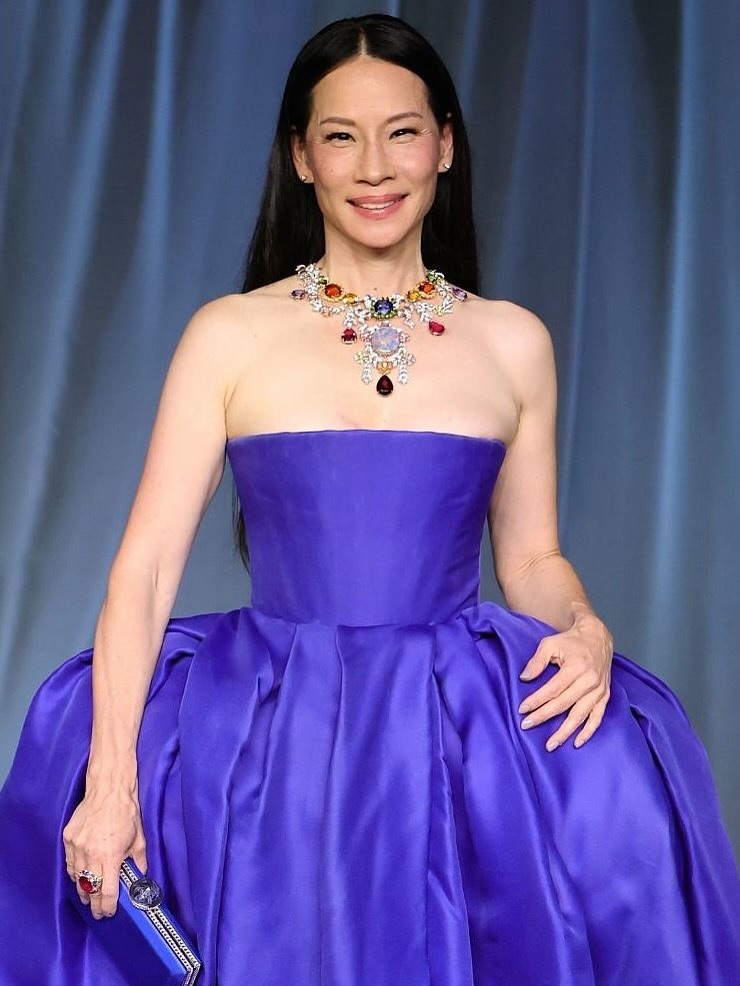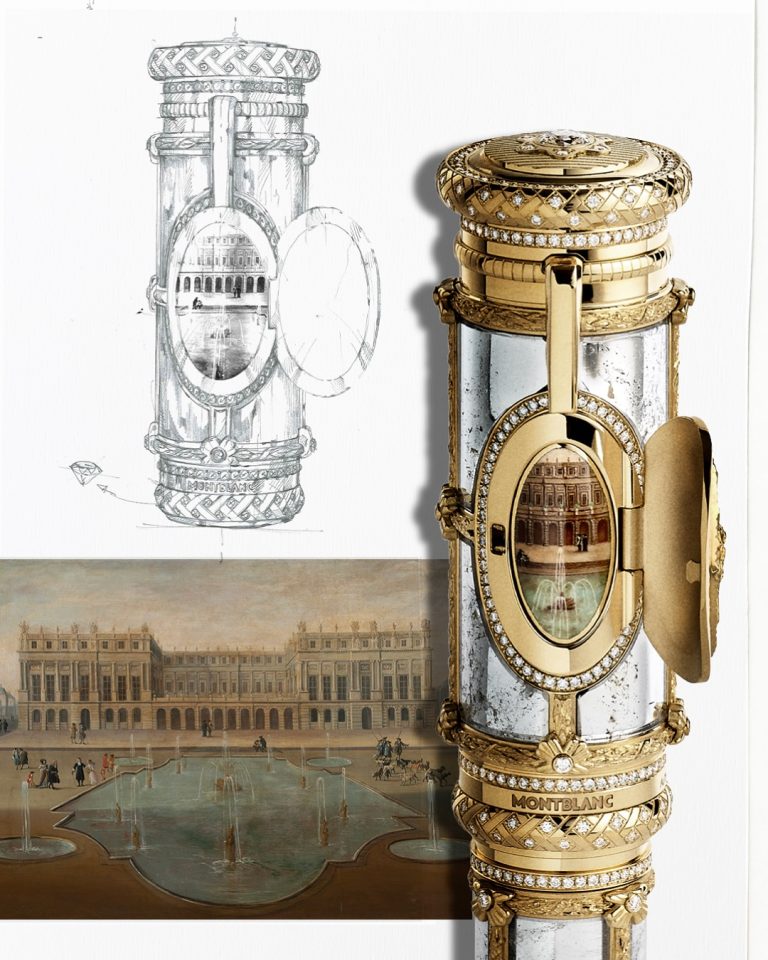I still remember the first time I walked past Bulgari’s original flagship store on Via dei Condotti in Rome. The soft glow of the boutique spilled onto the cobblestones, illuminating jewels that seemed to have been plucked from the stars themselves. In the window, Serpenti bracelet-watches coiled with effortless elegance, their scales shimmering as if guarding secrets of eternity. I was enchanted, drawn in by their mystique, and eager to uncover more about this legendary Maison. What I soon discovered was that, like any great story, Bulgari’s rise to the pinnacle of luxury began long before its jewels graced Hollywood’s elite.

Sotirios Voulgaris and the Birth of a Legacy
Sotirios Voulgaris—the visionary behind it all—was more than just a silversmith; he was a dreamer with ambitions far beyond the confines of his birthplace. Born in 1857 in Paramythia, a small village in Epirus, modern-day Greece, Sotirios inherited the art of metalwork from generations of silversmiths before him. In their home nestled within the rugged Balkan mountains, his family crafted intricate designs, but Sotirios yearned for something greater.
In 1881, armed with little more than his craft and an unshakable resolve, he embarked on a journey to Italy that would forever transform his life—and the world of luxury. Italy became his land of opportunity, and by 1884, he had opened a modest jewelry shop on Rome’s Via Sistina. It was far from the grandeur that would later define the Bulgari name, but the seeds of greatness had been planted. Rome embraced his artistry, and as his reputation flourished, so did his family. With his beloved wife, Eleni Basio, by his side, Sotirios raised six children in the Eternal City, all while methodically laying the foundation of what would become an empire.
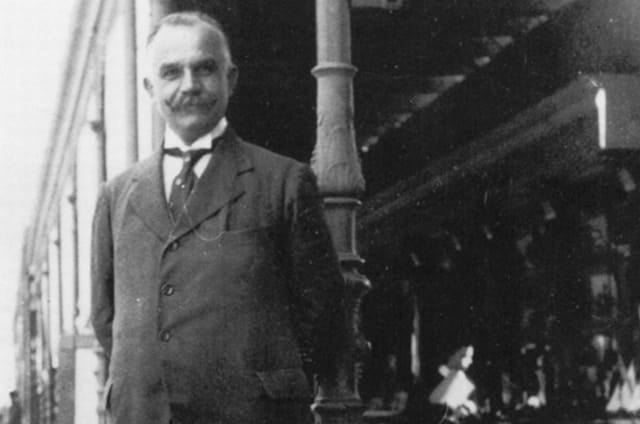
The pivotal moment arrived in 1905, when Sotirios unveiled Bulgari’s flagship store on Via dei Condotti. More than just a boutique, it was a bold statement of ambition and artistry. With its grandeur and prime location, the store quickly attracted the attention of aristocrats, royals, and celebrities alike. In its early years, Bulgari was renowned for exquisite silverworks that reflected influences from Byzantine and Islamic art, showcasing intricate craftsmanship that set the Maison apart.
However, Sotirios was not content to merely uphold tradition—he was a visionary eager to evolve. As Paris dictated global fashion trends, Bulgari adapted with finesse. The 1920s saw the introduction of Art Deco designs in platinum, while the 1930s brought forth bold geometric diamond motifs, blending modernity with timeless elegance.
Sotirios Bvlgari’s Farewell and His Sons’ Renaissance
By 1932, Sotirios Voulgaris—the visionary silversmith from the mountainous village of Paramythia—had built more than just a business; he had crafted a lasting legacy. His life’s work had become synonymous with elegance and innovation, but even the brightest stars must eventually fade. Recognizing that his time had come, Sotirios gathered his sons, Giorgio and Costantino, and entrusted them with the future of Bulgari, passing on not just a thriving enterprise but a commitment to excellence and artistry.
When Sotirios passed away that year, it was not the end of Bulgari, but rather a poignant turning point. His departure signaled the dawn of a new era, one defined by his sons’ vision and dedication. They inherited not only their father’s entrepreneurial spirit but also his unwavering passion for craftsmanship and innovation, ensuring that the house of Bulgari would continue to evolve and thrive.
The Transition Of Legacy
Sotirios had prepared his sons well. Giorgio and Costantino were not merely heirs to their father’s business; they were custodians of his vision. From an early age, they had been immersed in the artistry of fine jewelry, their fascination with the beauty and mystique of precious stones carefully nurtured in their father’s workshop. Though grieving his loss, they understood the immense responsibility they now carried—the mantle of a great name and a solemn promise to uphold its legacy.
With unwavering resolve, the brothers stepped into leadership, determined to elevate Bulgari beyond its established reputation. They were not content with simply preserving tradition; instead, they sought to redefine jewelry design for a modern world. Their approach was daring and innovative, blending classic influences with a bold, contemporary flair that would soon become Bulgari’s signature.
Iconic Bulgari Creations
The Trombino Ring
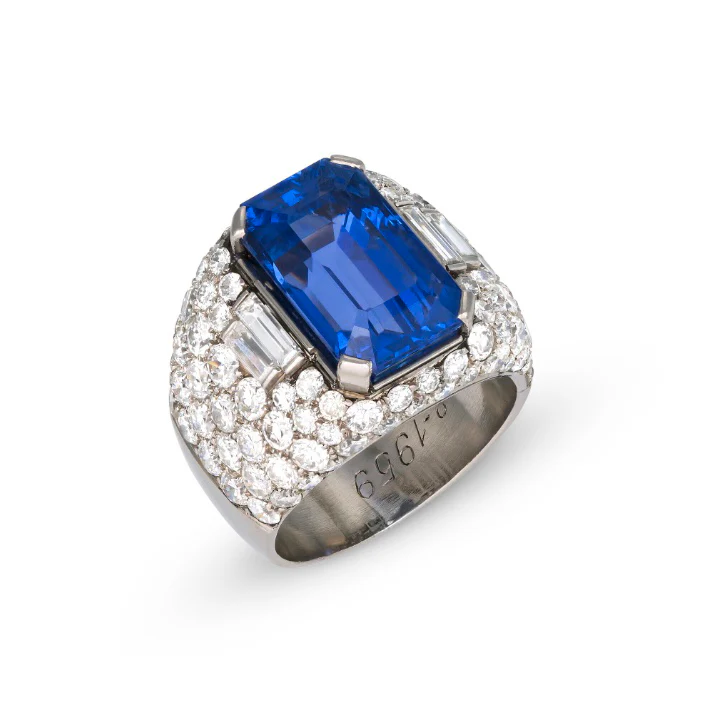
One of Bulgari’s earliest iconic creations under Sotirios’s leadership was the Trombino ring, introduced in the 1930s. Its name—meaning “little trumpet” in Italian—perfectly captured the ring’s playful yet commanding presence. This design epitomized Bulgari’s embrace of the geometric Art Deco style, featuring a bold center stone framed by intricate pavé diamonds, a hallmark of the era’s opulence and precision.
The Trombino ring quickly became a favorite among aristocrats and socialites, its compact yet striking form making it the ultimate statement piece. For the elite, wearing a Trombino was more than an accessory—it was a declaration of refined taste and social standing.
Decades later, the Trombino remains one of Bulgari’s most coveted vintage designs, a testament to its timeless allure and the Maison’s enduring legacy of innovation and elegance.
The Bulgari Serpenti Bracelet-Watches
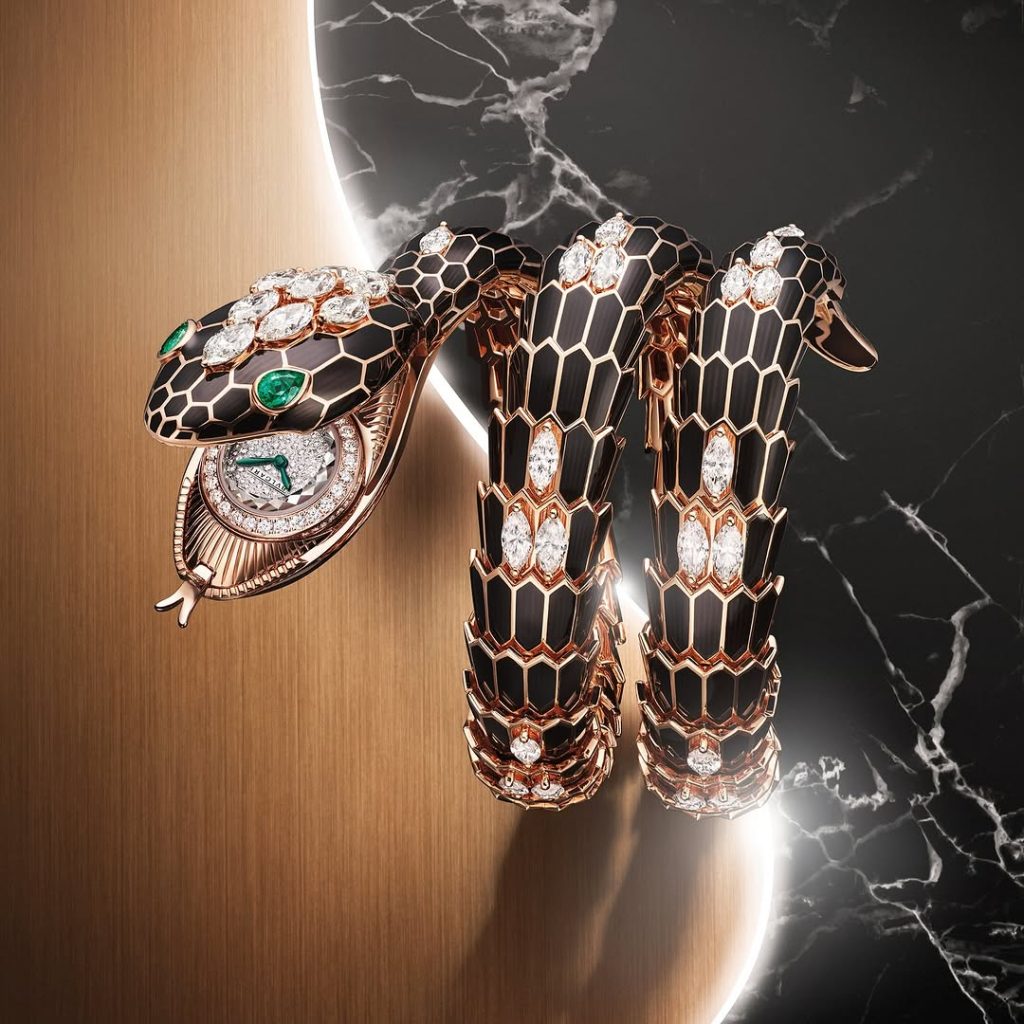
No discussion of Bulgari is complete without delving into the iconic Serpenti collection. First introduced to the world in 1948 under the leadership of Sotirios’ sons, and later perfected by the 1960s, the Serpenti bracelet-watches are masterpieces of craftsmanship and symbolism.
The serpent—an ancient emblem of rebirth, wisdom, and healing—found new life in Bulgari’s hands. With meticulous artistry, the bracelet’s scales, crafted from vibrant enamel and gold, coiled gracefully around the wrist, while the watch face remained cleverly hidden within the serpent’s head. Furthermore, the attention to detail was breathtaking; each scale was hand-fitted with precision, and the design was often adorned with precious gemstones such as rubies, diamonds, and emeralds, adding to its luxurious allure.
Over the decades, the Serpenti has evolved, yet it remains one of Bulgari’s most recognizable and beloved creations to this day. Its enduring appeal speaks to the brand’s ability to blend heritage with innovation, making it a true icon in the world of high jewelry.
The 1950s: A Burst of Color and Identity For Bulgari
The 1950s ushered in a post-war renaissance for Bulgari. Amid the economic boom, people sought joy, beauty, and color to dispel the grayness of the past years. Recognizing this shift, Giorgio and Costantino seized the opportunity to create a bold new aesthetic—one that would break away from the prevailing Parisian influence and instead embrace their Italian heritage.
This era marked the dawn of Bulgari’s signature style, characterized by vibrant gemstones, cabochon cuts, and symmetrical designs that would define the brand’s identity for decades to come. The cabochon cut—a smooth, rounded finish that accentuated a stone’s natural brilliance—became a hallmark of their creations. These pieces felt alive, their polished surfaces catching the light like liquid gems, offering a sense of movement and energy unlike anything seen before.
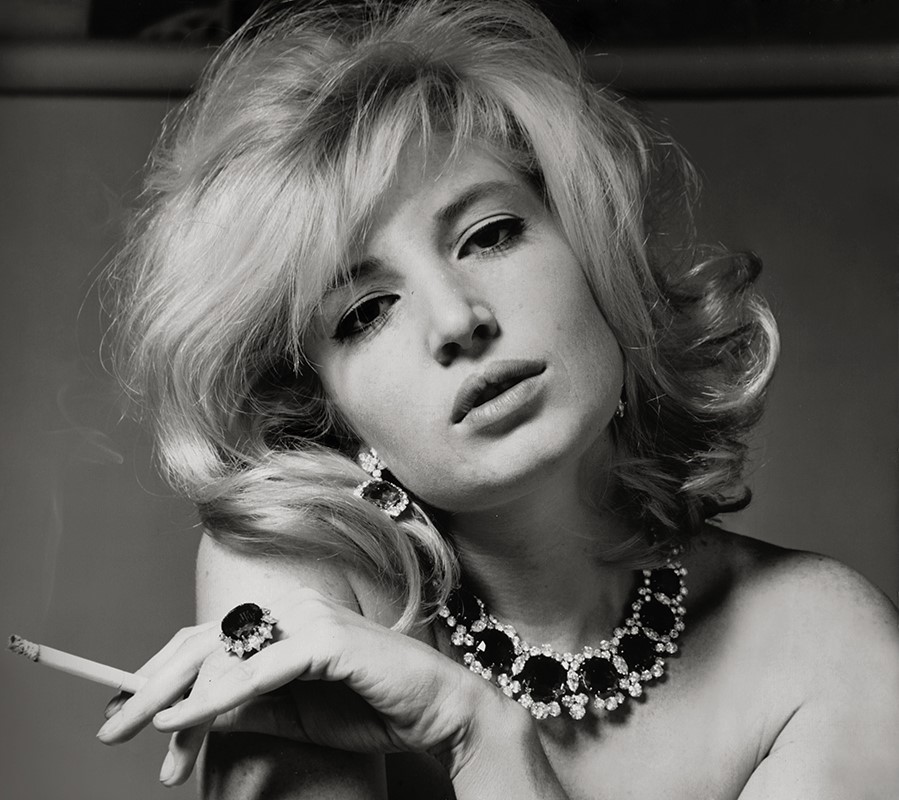
Moreover, Bulgari’s bold use of color was a radical departure from tradition, where diamonds had long reigned supreme. Instead, the Maison championed rubies, emeralds, and sapphires, not for their intrinsic value, but for their sheer brilliance and allure. These stones were meticulously arranged in mesmerizing palettes, blending unexpected hues to create striking compositions that celebrated life and exuberance. It was a daring move—one that resonated with a world eager for vibrancy and renewal.
It was during this era that Bulgari began to capture the hearts of Hollywood’s elite. Elizabeth Taylor and Gina Lollobrigida became devoted admirers, drawn to the brand’s unapologetic glamour. Who could forget the dazzling emerald necklace that graced Elizabeth Taylor’s neck, its vivid green hues so captivating that they almost rivaled the intensity of her famous violet eyes?
En Tremblant Floral Brooches
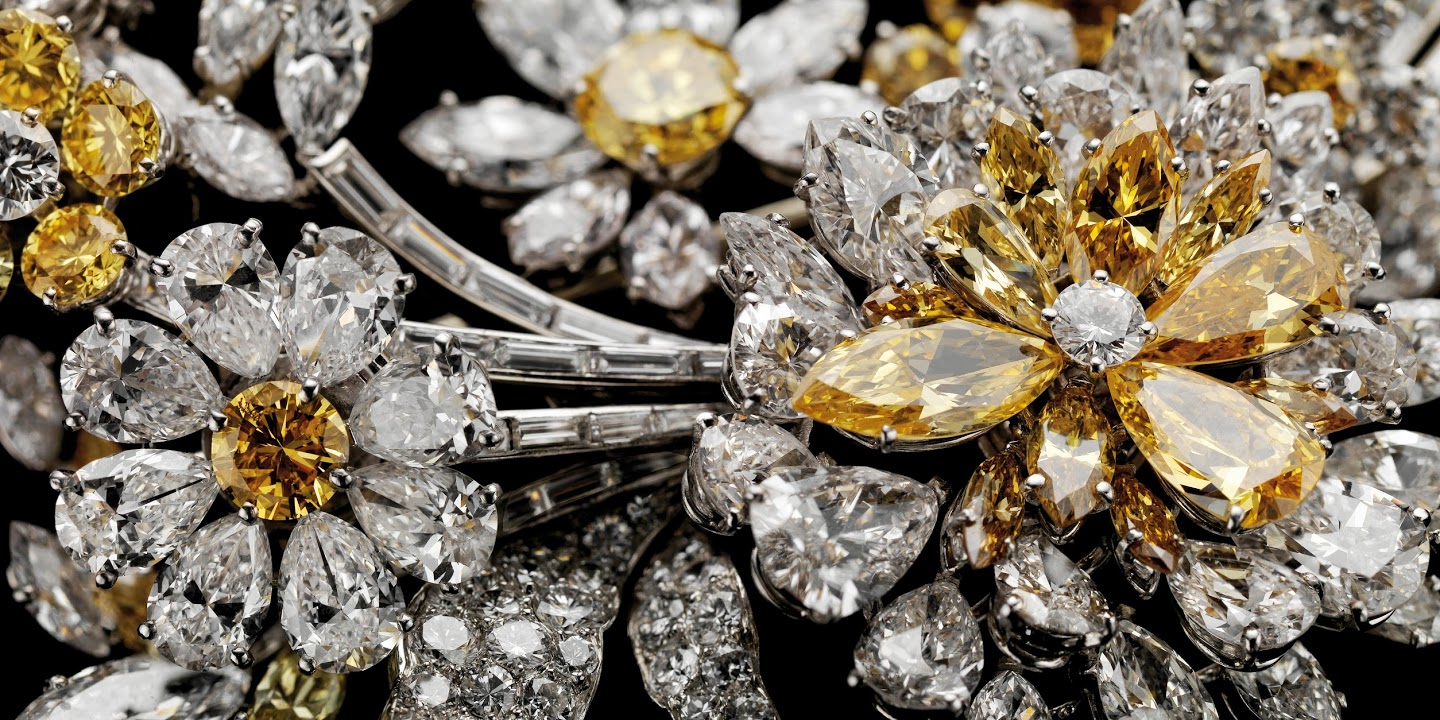
It was against the backdrop of this burst of colors that Bulgari unveiled its En Tremblant floral brooches—an exquisite marriage of engineering and artistry. These brooches, adorned with trembling diamond corollas, were meticulously crafted to catch the light with every movement, creating a mesmerizing dance of sparkle and shadow.
Although the en tremblant technique had existed long before Bulgari adopted it, the Maison elevated it to unprecedented heights. Bulgari’s unique approach introduced vibrant, colored gemstones nestled among diamonds, producing a kaleidoscopic effect that brought the pieces to life. These brooches soon became a favorite among Hollywood’s elite, with stars like Gina Lollobrigida wearing them to red carpet events, further cementing their place in fashion history.
During this era, Bulgari also introduced its now-iconic multi-hued cabochon necklaces and bracelets, which quickly became hallmarks of the brand’s aesthetic. By prioritizing color, the house created designs that felt modern, playful, and undeniably glamorous. The bold, joyful hues resonated with a world eager to embrace a new sense of opulence and individuality.
Elizabeth Taylor’s Emerald Suite: A Love Affair in Green
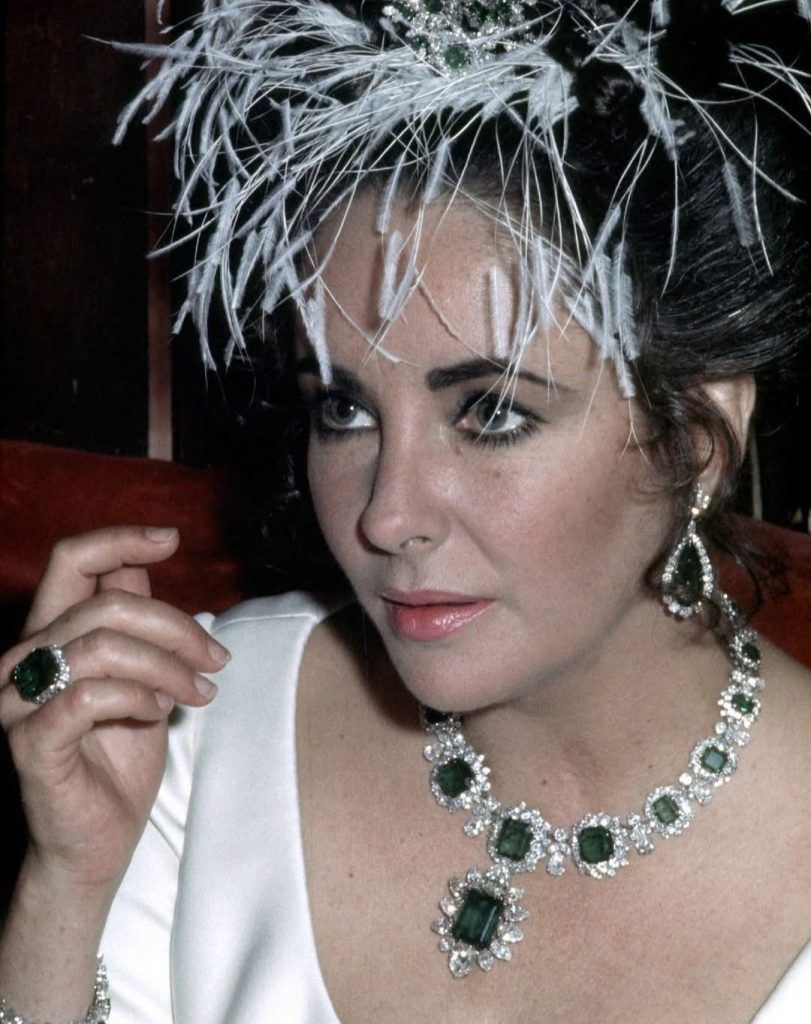
Perhaps one of Bulgari’s most famous and enduring commissions was the emerald and diamond suite gifted to Elizabeth Taylor by Richard Burton. This extraordinary suite—comprising a necklace, bracelet, brooch, ring, and earrings—featured some of the world’s finest emeralds, their green so vivid and rich it seemed almost otherworldly.
Taylor wore the pieces frequently, but they reached their most iconic moment when she adorned the brooch at her wedding to Burton. The actress’s love affair with Bulgari was well-documented, and in her autobiography, she famously referenced Richard who said, “I introduced Liz to beer and she introduced me to Bulgari.” This sentiment captured the essence of their passionate romance—one intertwined with their shared appreciation for life’s finer things.
The emerald suite has since become one of the most iconic examples of Bulgari’s artistry, a perfect blend of bold design and impeccable craftsmanship. It remains a testament to the Maison’s ability to create pieces that transcend time, embodying both the grandeur of Hollywood’s golden age and the timeless allure of extraordinary gemstones. During the auction of Taylor’s high ejwelry collection by in 2011, the Bulgari emerald suite realized over $23 million.
Bvlgari: The Pinnacle of Modern High Jewelry

As Bulgari’s story continues to unfold, the house has firmly established itself at the pinnacle of modern high jewelry. While its heritage is deeply rooted in timeless designs like the iconic Serpenti and the elegant Trombino, Bulgari’s contemporary high jewelry collections showcase the brand’s unparalleled ability to reinvent, innovate, and push the boundaries of artistry. Each piece reflects a perfect blend of tradition and modernity, solidifying Bulgari’s status as a leader in luxury jewelry.
The Magnifica Collection
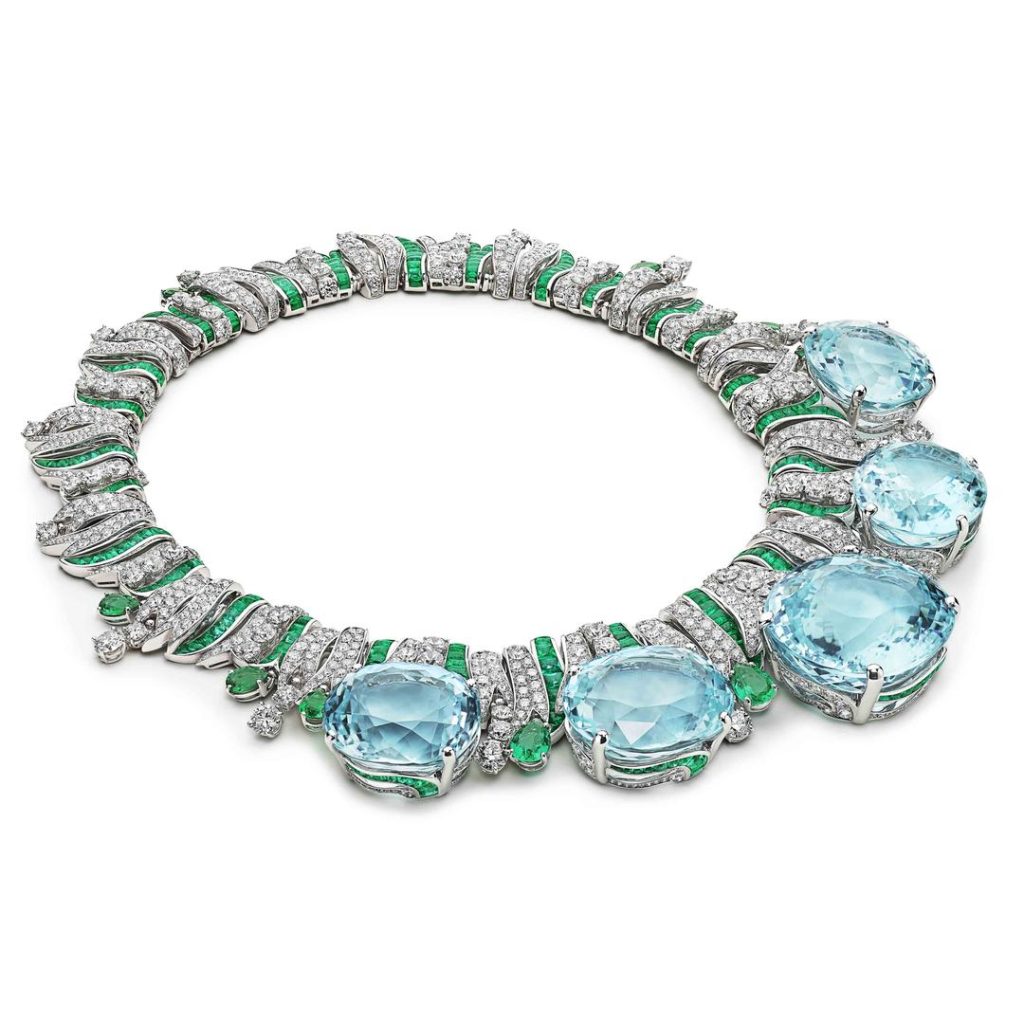
Bulgari’s Magnifica collection, launched in 2021, is nothing short of a masterpiece. Representing the pinnacle of modern luxury, it blends exquisite gemstones with groundbreaking designs. Each piece is a bold celebration of life’s vibrancy and the house’s rich Italian heritage.
One standout is the Mediterranean Queen necklace, an awe-inspiring creation featuring five cushion-cut Paraiba tourmalines weighing over 500 carats. These rare gemstones are set amidst diamonds and emeralds, creating a stunning interplay of colors. Thanks to its intricate craftsmanship, every angle of the necklace catches the light, radiating brilliance and sophistication.
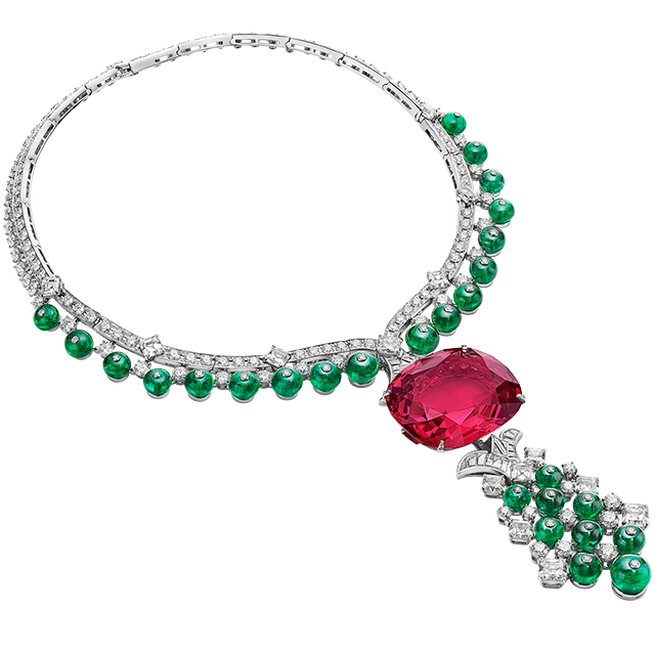
Another highlight is the Imperial Spinel necklace, which features one of the world’s largest spinels—a breathtaking 131.21-carat stone with a fiery crimson hue. This rare gem is artfully surrounded by diamonds and emeralds, creating a regal and unforgettable statement. The necklace’s bold design and vibrant colors make it a true showstopper, embodying Bulgari’s mastery of combining rarity with artistry.
The Serpenti Reimagined: A Modern Icon
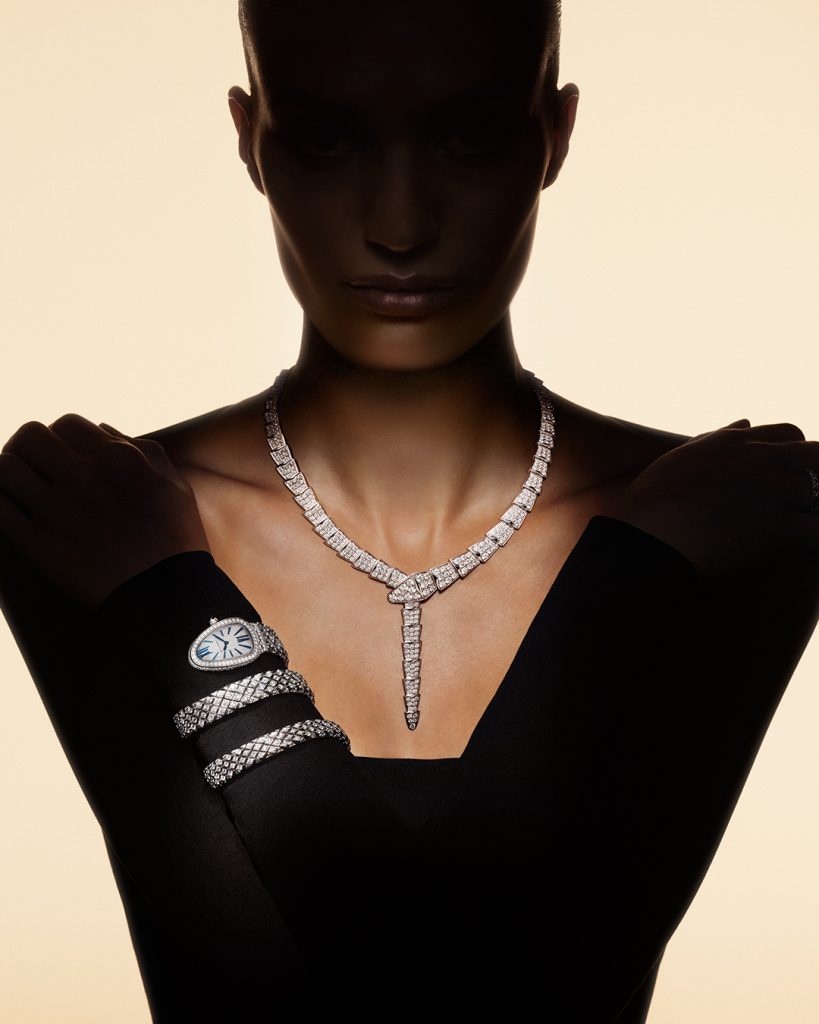
The Serpenti collection remains the beating heart of Bulgari’s modern high jewelry offerings, but today’s designs push the boundaries of creativity. Imagine slipping on a necklace that feels alive, coiling around you with the grace of a snake in motion. That’s the magic of Bulgari’s Serpenti collection—a masterpiece that has slithered its way into modern high jewelry like no other.
Take the Serpenti Viper necklace, for instance. It doesn’t just rest on your neck; it wraps around you seductively and powerfully, as if whispering secrets of elegance and allure. Its scales, encrusted with pavé diamonds, move with a fluidity so natural, they seem enchanted.
Building on the iconic snake motif, Bulgari has introduced contemporary interpretations that blend the mystique of the Serpenti with sleek, modern aesthetics. The Serpenti Seduttori watches are a prime example. Their streamlined forms, paired with cutting-edge Swiss watchmaking, highlight Bulgari’s ability to merge heritage with innovation. The result? Pieces that are as technically precise as they are visually captivating.
The Barocko Collection
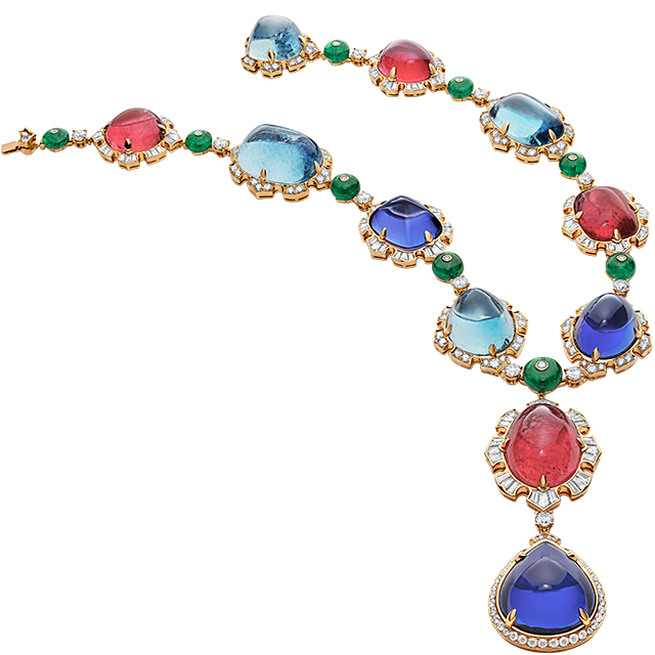
The Barocko collection is a love letter to Rome’s Baroque architecture, capturing its sweeping curves and larger-than-life opulence in dazzling jewelry. Take the Cabochon Exuberance necklace, for instance. It’s like wearing a Roman palace around your neck—sapphire cabochons, emeralds, and amethysts are arranged in ornate, flowing designs that practically sing of grandeur. Each piece in the collection reflects the drama and elegance of Baroque artistry, making it a true celebration of Bulgari’s Roman heritage.
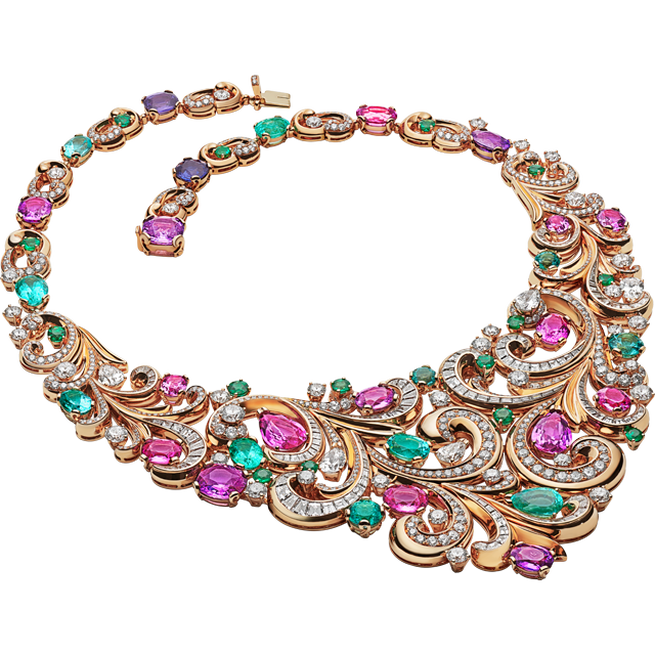
One of Bulgari’s most captivating pieces is the Lady Arabesque Necklace, a breathtaking creation that combines the mystery of ancient art with the elegance of modern craftsmanship. Inspired by intricate Middle Eastern motifs, this high jewelry masterpiece blends geometric patterns with vibrant gemstones like pink sapphires, Paraiba tourmalines, emeralds, and diamonds. The result is a piece that feels as though it were plucked from an enchanted tale, radiating both history and contemporary allure.
The Aeterna Collection
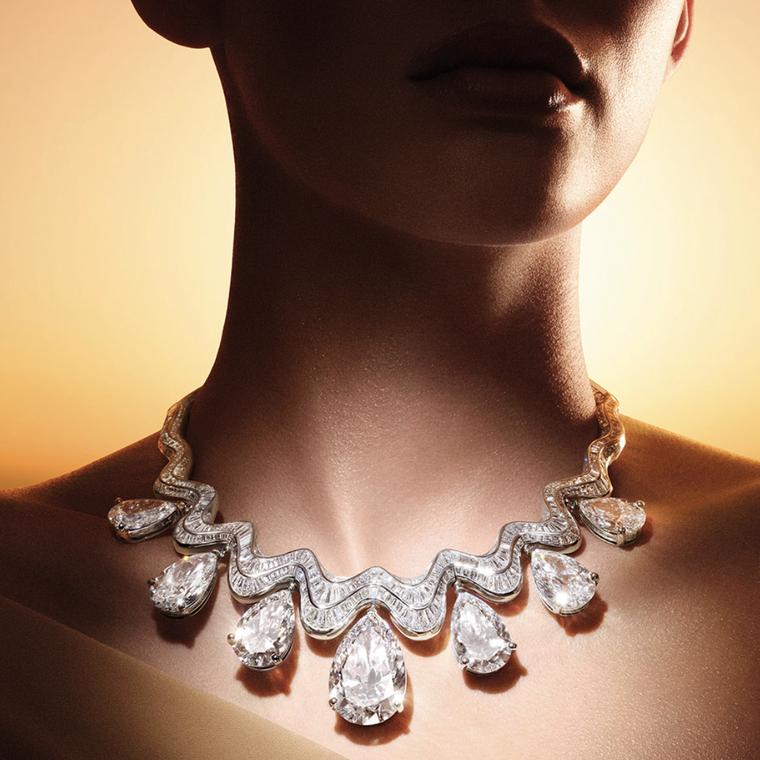
How can I not mention the Aeterna collection, Bulgari’s most lavish high jewelry collection to date? Unveiled to celebrate the brand’s 140th anniversary in 2024, this collection is a toast to opulence and the art of living well.
The star of the show is the Serpenti Aeterna diamond necklace, priced at a staggering €40 million. It features seven pear-shaped diamonds totaling 140 carats, all cut from a single rough stone of over 200 carats sourced from Lesotho. These breathtaking gems are secured by a serpentine band of baguette-cut diamonds, creating a piece that is as mesmerizing as it is monumental. The necklace is a true testament to Bulgari’s mastery of craftsmanship and its commitment to celebrating life’s most extraordinary moments.
The B.zero1 Ring: Modern Minimalism
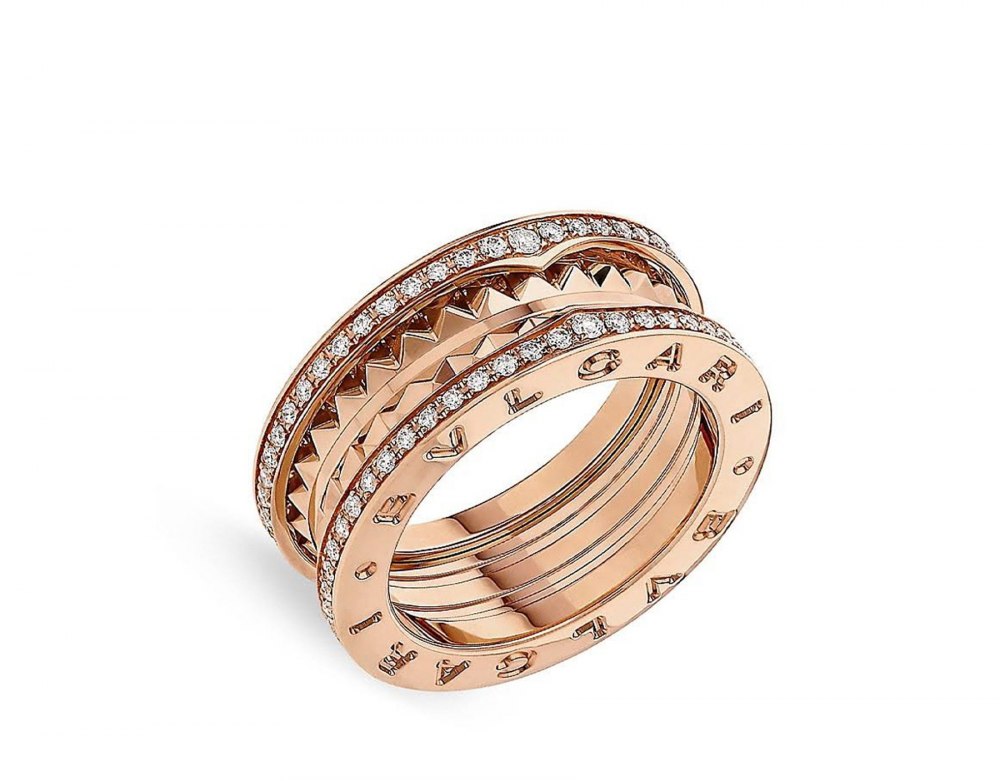
The B.zero1 ring is a testament to Bulgari’s ability to innovate. Inspired by the Colosseum, its spiral design symbolizes the eternal city and the cyclical nature of life. Crafted in yellow, white, or rose gold—and often adorned with pavé diamonds—the B.zero1 ring quickly became an instant classic. Its sleek, minimalist design resonated with a new generation, offering a contemporary take on Bulgari’s timeless elegance.
Pushing Boundaries: Innovation in Materials and Techniques
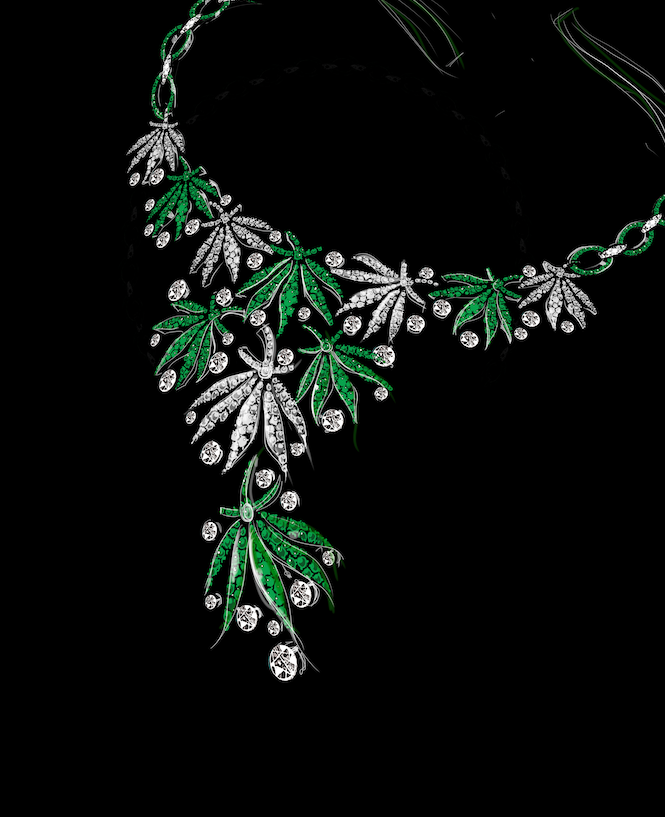
The house continues to push boundaries by experimenting with unconventional materials like titanium, ceramic, and rock crystal, placing its creations at the forefront of contemporary luxury.
A groundbreaking example is the Wild Pop collection, inspired by the vibrant energy of the 1980s. This playful line features bold shapes, neon colors, and unexpected materials such as lacquer and onyx. Pieces like the Happy Leaves necklace, crafted from emeralds and carved rock crystal, perfectly embody Bulgari’s audacious and innovative approach to design. Each creation is a celebration of boldness and creativity, redefining what modern luxury can be.
A New Era of Horology: Bvlgari’s Journey into Time
The year was 1977. Bulgari, already a master in the art of jewelry, took a bold step into a new realm: watchmaking. For a brand rooted in opulence and creativity, crafting timepieces wasn’t just about telling time—it was about telling stories. From the very first tick of its watches, Bulgari aimed to blend Italian flair with Swiss precision, creating horological masterpieces that would set the brand apart in an already crowded market. This leap wasn’t a departure from Bulgari’s identity but an evolution of it. After all, watches are jewelry with a heartbeat—a perfect fusion of art and engineering.
The BVLGARI BVLGARI
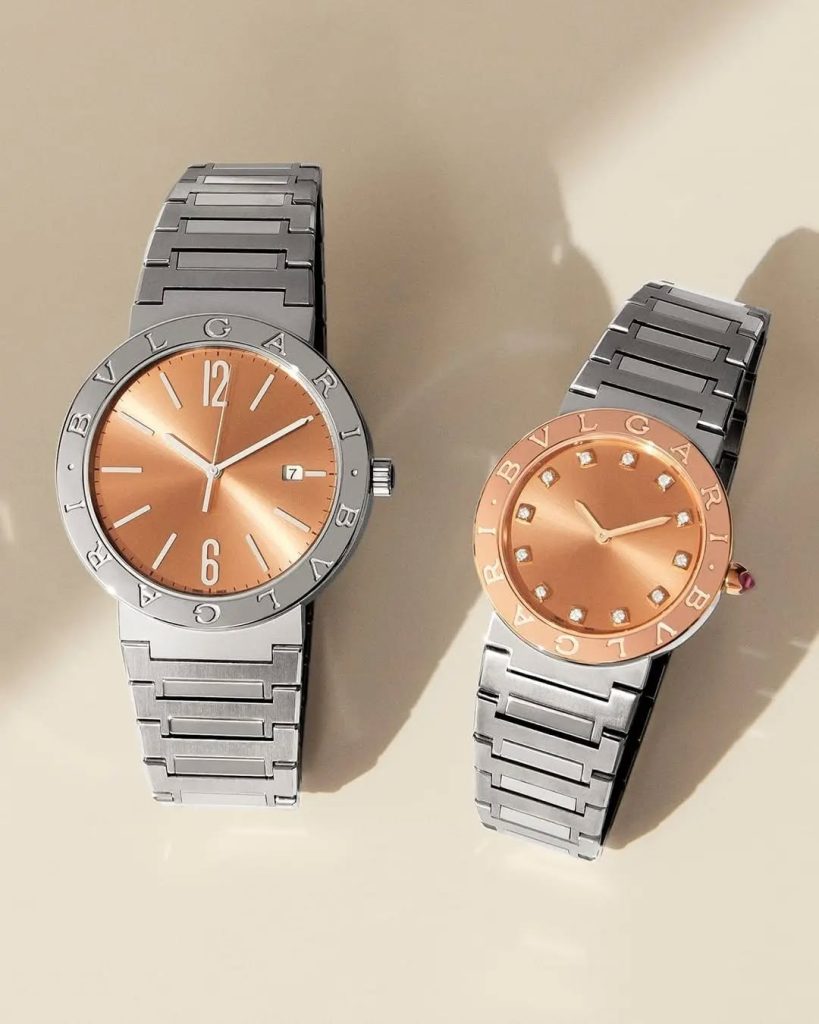
Every great story has a defining moment, and for Bulgari watches, it was the launch of the BVLGARI BVLGARI in 1977. Inspired by the inscriptions on ancient Roman coins, the watch featured a bold, circular bezel engraved with the double “BVLGARI” logo.
The BVLGARI BVLGARI quickly became an icon, celebrated not only for its striking aesthetic but also for its audacity. In an era of subtlety, it dared to be bold. Over the years, Bulgari has reimagined this classic, introducing variations in gold, ceramic, and steel, as well as incorporating modern complications like chronographs. Each iteration pays homage to the original while pushing the boundaries of innovation and design.
Octo Finissimo
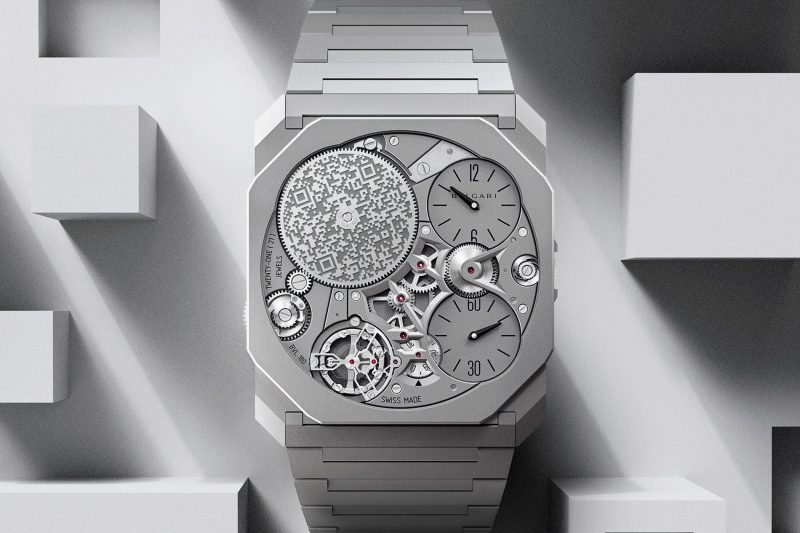
Fast forward to 2014, and Bulgari once again rewrote the rules with the Octo Finissimo—a watch that didn’t just embrace the ultra-thin trend but dominated it.
The journey began with the Octo Finissimo Automatic, featuring a case measuring an astonishing 5.15mm thick. Yet, within that impossibly slender frame lay a fully functional automatic movement. Bulgari didn’t stop there. The Octo Finissimo Tourbillon followed, breaking records as the thinnest of its kind, while the Chronograph GMT showcased the brand’s ability to blend innovation with practicality.
What makes the Octo Finissimo truly remarkable, however, isn’t just its mechanics—it’s the design. The octagonal case, inspired by Roman architecture, bridges the past and the present. Crafted from titanium, carbon fiber, and other modern materials, the watch is a masterful ode to minimalism and technical brilliance.
The Serpenti Collection
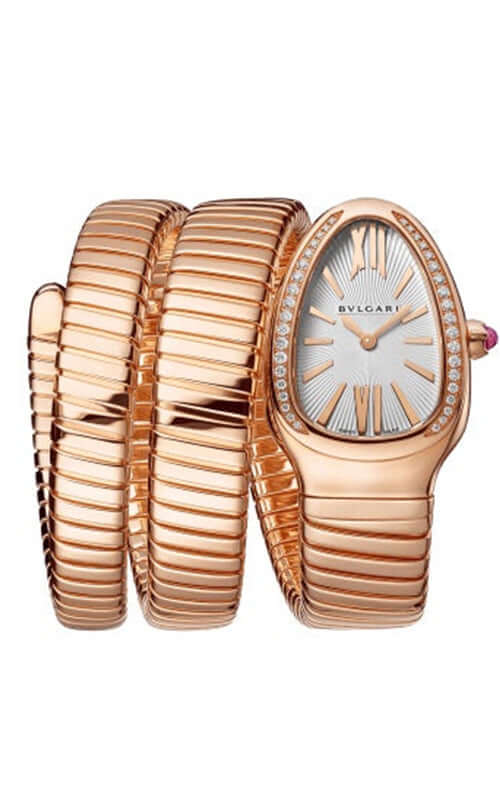
Bulgari’s storytelling prowess shines brightest in its Serpenti collection. Since slithering onto the scene in the 1940s, the Serpenti watch has become a symbol of seduction and mystery.
Imagine a timepiece that doesn’t just sit on your wrist but wraps around it, coiling with the grace of a serpent. Its “scales,” crafted using the Tubogas technique, shimmer with diamonds, enamel, and precious metals. The serpent motif, a powerful symbol of transformation and rebirth, makes the Serpenti a talisman as much as a timepiece.
The modern Serpenti Tubogas watch takes this legacy even further with a slimmer profile and a teardrop-shaped case. It’s a watch that whispers luxury while exuding boldness, embodying Bulgari’s ability to blend tradition with innovation.
The Fenice Watch
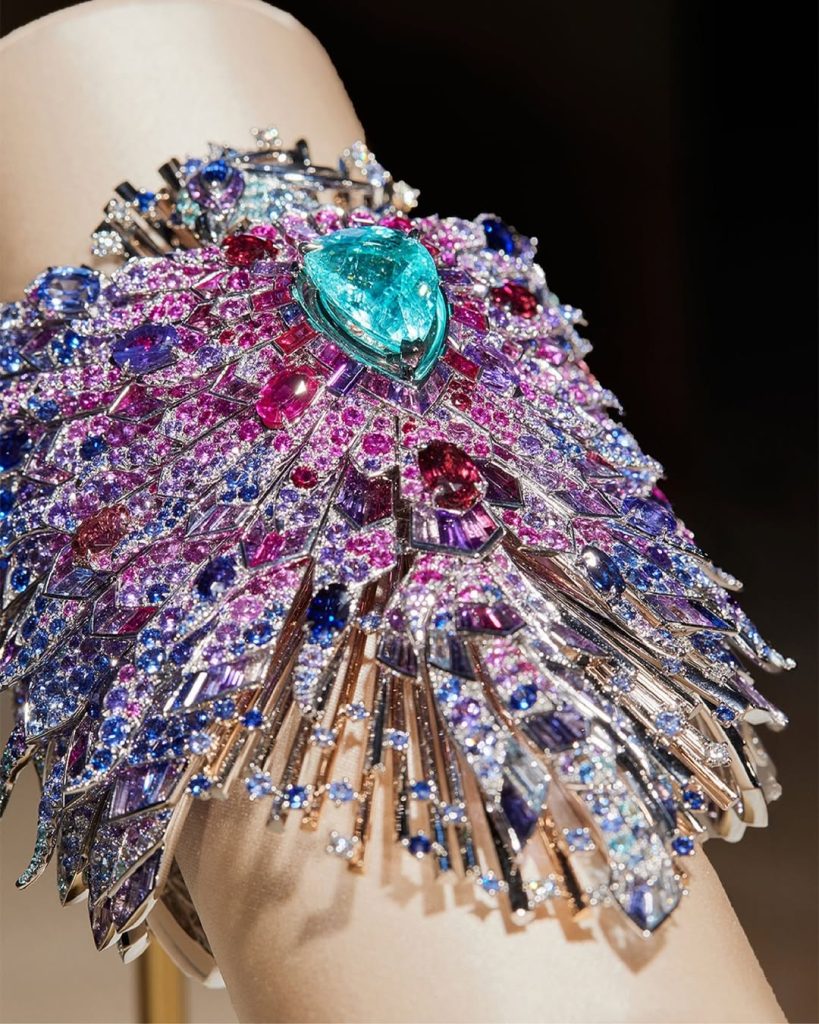
Bulgari’s penchant for theatricality finds its ultimate expression in the Fenice Watch. Named after the legendary Teatro La Fenice opera house in Venice, this timepiece is nothing short of a spectacle.
Adorned with a symphony of diamonds, Paraiba tourmalines, rubies, and sapphires, the Fenice Watch is a celebration of drama and beauty. Its intricate design, which took over 3,000 hours to create, mirrors the grandeur of its namesake. Yet, beneath its dazzling exterior lies a precise movement, ensuring it’s as functional as it is breathtaking. This watch is a true testament to Bulgari’s ability to merge artistry with horological excellence.
The Gerald Genta Legacy: A Chapter of Innovation
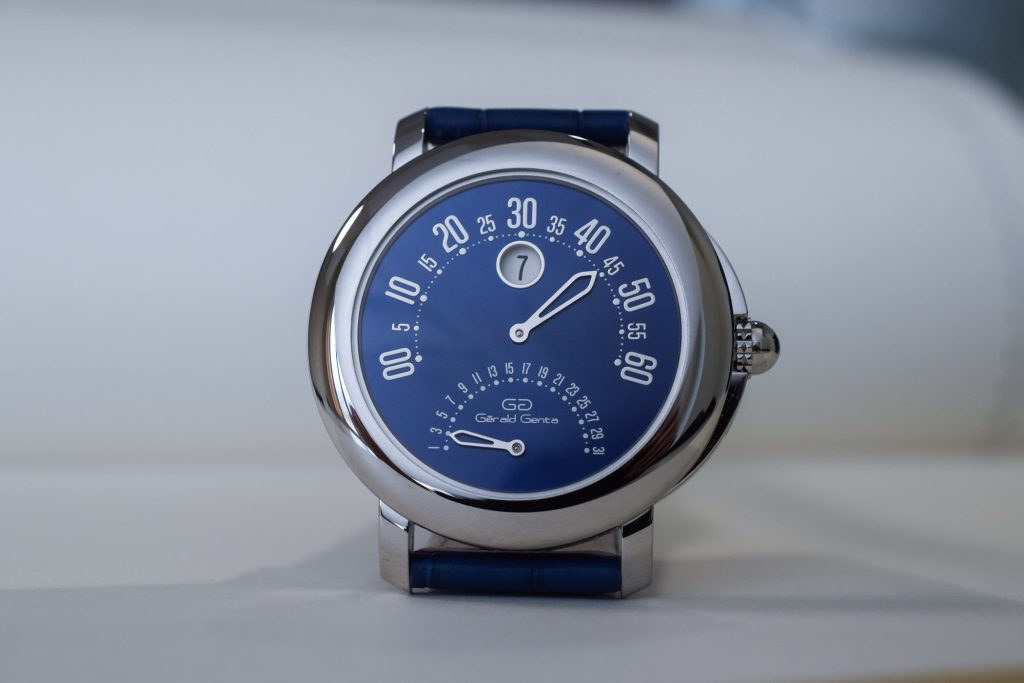
In 2000, Bulgari turned a new page in its story by acquiring Gerald Genta, the legendary watch designer behind icons like the Audemars Piguet Royal Oak. This partnership infused Bulgari’s watchmaking division with a treasure trove of innovation.
Take the Arena Bi-Retro, for instance. With its retrograde minutes and jumping hour display, it’s not just a watch—it’s an experience. These timepieces, born from Genta’s genius and Bulgari’s artistry, have become collector’s dreams, embodying the brand’s commitment to pushing boundaries.
Bulgari watches are more than instruments for telling time—they are wearable works of art. Whether it’s the sleek sophistication of the Octo Finissimo or the glamorous allure of the Serpenti, each timepiece tells a story of craftsmanship, innovation, and Italian heritage.
Bulgari Today: A Jewel in LVMH’s Crown
In 2011, Bulgari joined the LVMH family, cementing its position as one of the world’s leading luxury brands. This partnership expanded the house’s global reach, yet it never diluted its essence. The Serpenti, the Trombino, and those luminous cabochons continue to captivate collectors and connoisseurs alike.
Conclusion
As I stand in front of Bulgari’s Via Condotti store today, I feel the weight of its legacy. Each jewel tells a story—a tale of resilience, ambition, and unparalleled artistry. And as the sunlight catches a Serpenti watch in the window, I can’t help but imagine Sotirios himself smiling, knowing that his dream has become an eternal force to reckon with.
Featured image: Bulgari

Amanda Akalonu is dedicated to weaving together the worlds of jewelry, watches, and objects through a lens of literary storytelling.

